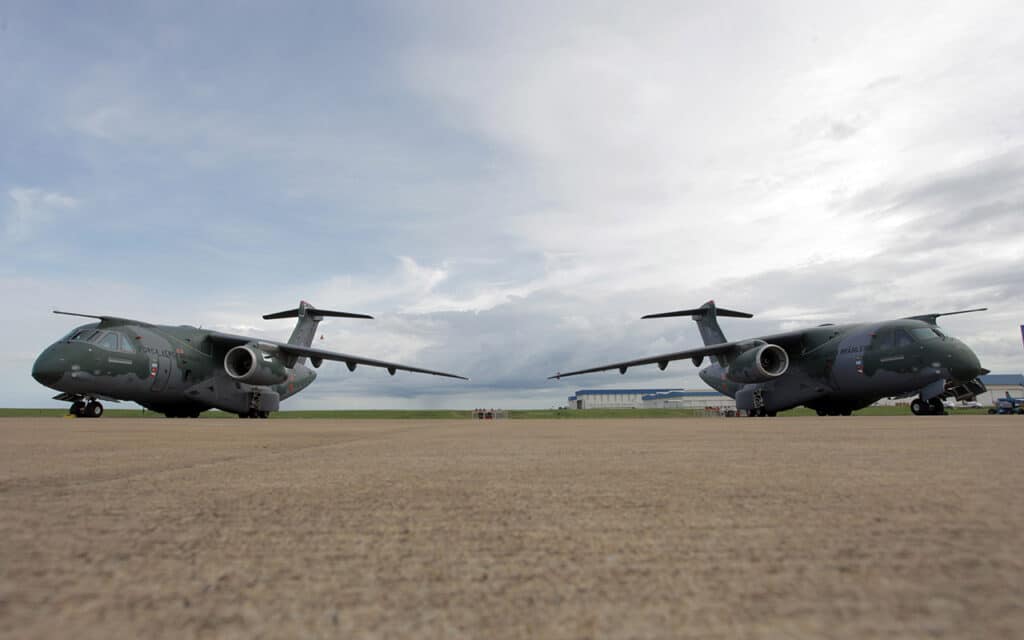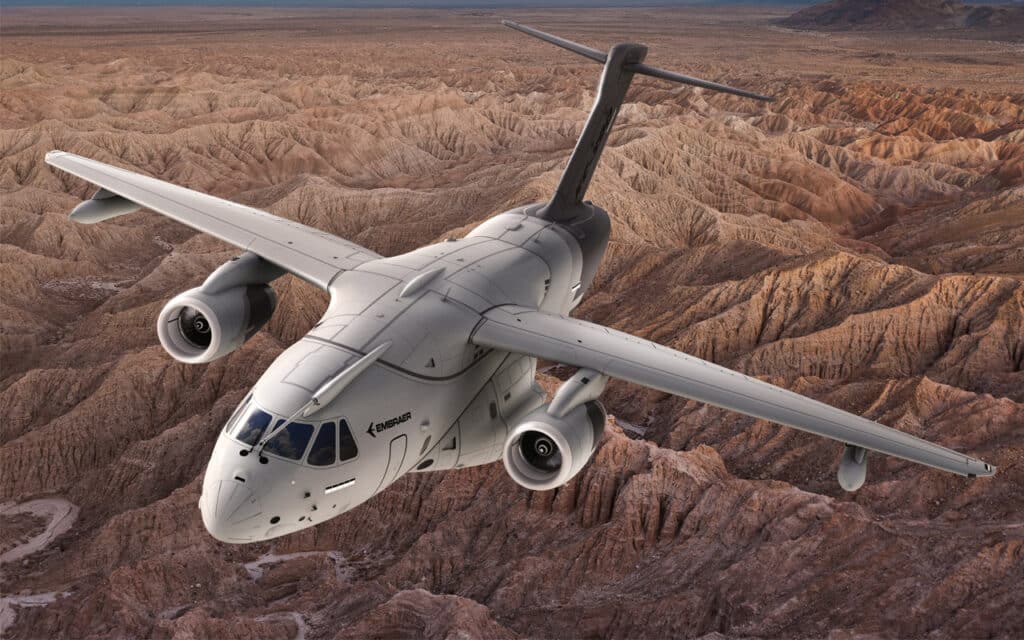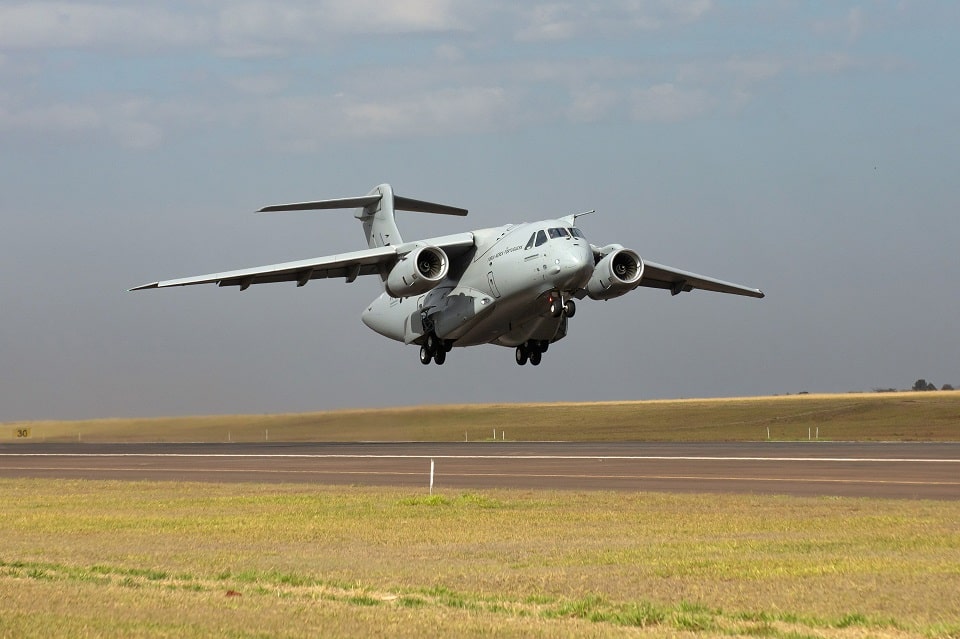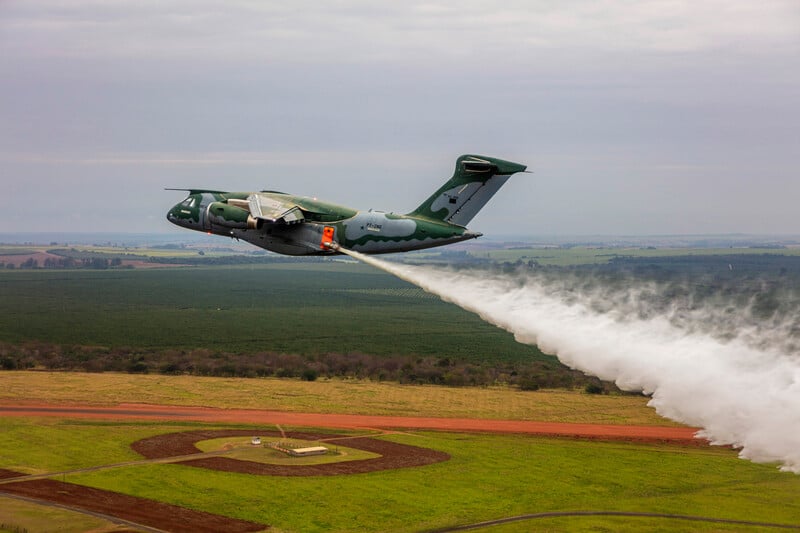Aviation
10 things about Embraer KC 390.
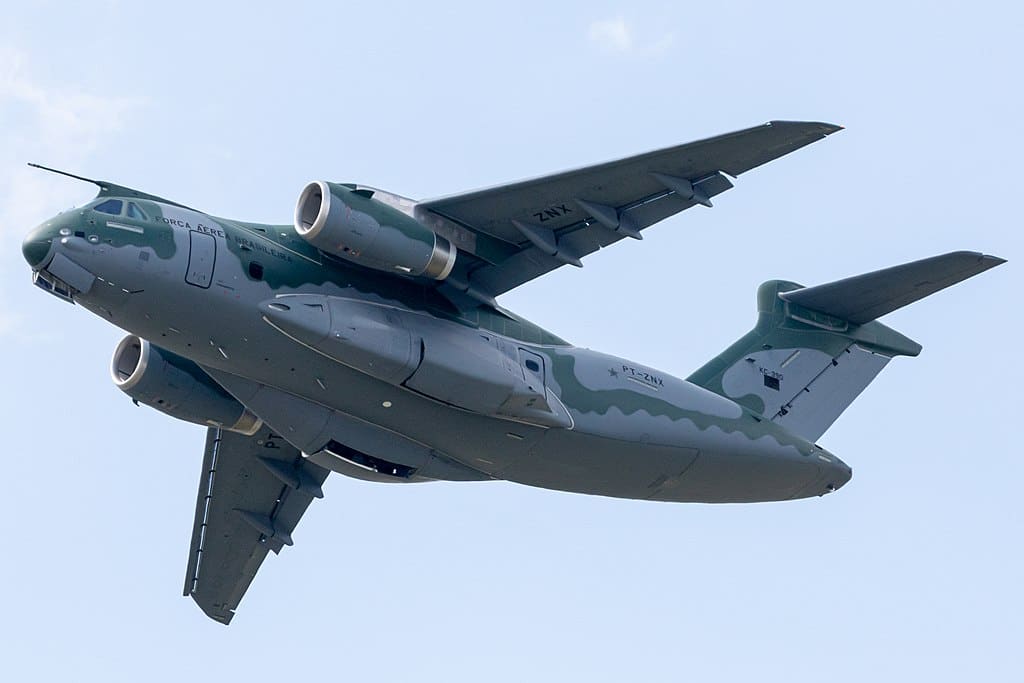
We shall look at several fascinating KC 390 Embraer airplane facts in this article. In the defense industry, it serves a variety of functions.
1. Establishment of Embraer KC390
Embraer S.A. is a Brazilian multinational aerospace manufacturer that produces commercial, military, executive, and agricultural aircraft, and provides aeronautical services. It was founded in 1969 in São José dos Campos, São Paulo, where its headquarters are located.
The first production aircraft was delivered to the Brazilian Air Force on 4 September 2019. On 18 November 2019 during the Dubai Airshow, Embraer announced the aircraft’s new name for the global market, C-390 Millennium.
2. Cost of KC 390
The KC-390 program has already cost US$2.25 billion to design, and when manufacturing starts, the cost per unit is anticipated estimated value is US$100 million per unit. In 2014, this aircraft made its maiden appearance in the media.
Aircraft comparison Brazil’s KC-390 vs Japan’s Kawasaki C-2(Opens in a new browser tab)
3.KC-390 Cockpit and Flight Deck
Two Head-Up Displays (HUD) are available in the KC-390 cockpit, allowing the pilot to see the information without turning their head from the customary vantage position.
A Rockwell Collins Pro Line Fusion avionics system is also installed for the pilot’s enhanced situational awareness. To produce and build the KC-390’s fly-by-wire flight control system, a British aerospace business secured a deal with Embraer.
It is also comparable with Embraer kc-390 vs c-130 click here
[the_ad id=”17216″]
4. Embraer KC-390 beats C-130J in the Netherlands and it will become its new tactical transport
The Ministry of Defense of the Netherlands has chosen the C-390M from Brazilian manufacturer Embraer as the successor and replacement for its C-130H Hercules. The first aircraft should be delivered in 2026. As explained by the Dutch Ministry of Defense, the 4 C-130s (c-390 vs c-130) operated by the Air Force have reached the end of their service life. Initially, the intention was to keep them in flight until at least 2031.
5. KC -390 is the 21st-century multi-mission aircraft
Embraer KC-390 Millennium multi-mission aircraft has proven its capability, reliability, and outstanding performance on domestic and overseas missions, including joint operational exercises with the US Air Force at the start of this year.
The entrance of the C-390 Millennium into the market comes at a crucial moment when air forces and governments seek to update their airlift fleet and incorporate aircraft with modern technology.
[the_ad id=”15771″]
6.A400M, KC-390 will reshape the military transport market
The A400M is built to transport enormous cargo over long distances, including heavier loads over longer ranges than a C-130 plane. The A400M is pricey for the majority of the world’s militaries despite being less expensive than a C-17, which presents a challenge for Airbus Military.
The KC-390 is being developed by Brazilian company Embraer to fulfill a 28-aircraft Brazilian air force request to replace its C-130 aircraft. These are being produced by the corporation with the goal of strengthening its position in the military aircraft industry.
7. Fuel consumption in KC -390
The C-390 can refuel in flight other aircraft through two wing-mounted probe and drogue pods from Cobham plc delivering up to 1,500 L (400 US gal) per minute from a 35 t (77,000 lb) total fuel capacity, between 120 to 300 kn (220 to 560 km/h) and from 2,000 to 32,000 ft (610 to 9,750 m).KC-390 is a cargo aircraft with an added aerial refueling capability, The aircraft can be rapidly converted from transport to tanker, depending on mission requirements.
8. Portugal, first export customer for Embraer KC-390 airlifter
Portugal is a major partner in the KC-390 program, with some of its parts including the aircraft’s central fuselage being produced by Embraer’s subsidiary OGMA in Evora, about a hundred kilometers east of Lisboa. It is now the first export customer of the aircraft, with Brazil still being the largest customer.
Its entry into service with the Brazilian Air Force should happen in the 3rd quarter of 2019. This new order brings the total backlog to 35 aircraft. Embraer has also received letters of intent from the Czech Republic (another partner in the program), as well as Argentina, Chile, and Colombia.
9. specifications of KC -390
The C-390 was designed by Embraer to fit into a hold that is 18.5 m (61 ft) long, 3.45 m (11.3 ft) wide, and 2.95 m (9 ft 8 in) high with a rear ramp. The high wing’s twin IAE V2500-E5 turbofans are positioned ahead and with anhedral angles, slats, and high-lift devices that can flap up to 40 degrees. Its maximum takeoff weight is 86,999 kilogramme (191,800 pounds), and its fuel capacity is 23,000 kilogramme (50,700 lb).
[the_ad id=”15771″]
10. Embraer Begins Production of the First KC-390 Millennium for Hungary
The KC-390 for the Hungarian Defence Forces will be the first in the world with the Intensive Care Unit in its configuration, an essential feature to perform humanitarian missions. The aircraft fully meets the requirements of the Hungarian Defence Forces, being able to perform different types of military and civilian missions including Medical Evacuation, Cargo and Troops Transport, Precision Cargo Airdrop, Paratroopers Operations, and AAR.
Bonus fact
11. The KC 390 aircraft can also be used for firefighting operations.
Embraer completed the Modular Airborne Fire Fighting System (MAFFS II) certification campaign’s battle test on September 5, 2022, giving the C-390 Millennium the necessary capabilities to carry out firefighting missions. The tests conducted at the Embraer factory in Gavio Peixoto, So Paulo State, Brazil, mark a significant development in the Brazilian Military Certification Authority’s certification campaign for this capacity (IFI). After certification, aircraft operators will have access to the firefighting capability.
Share this article with your family and friends if you enjoyed it.

Aviation
Boeing, Antonov to Collaborate on Defense Projects

– MOU represents Boeing’s commitment to work with Ukrainian industry
– Includes exploring opportunities for collaborating on in-country support of Unmanned Aerial Systems
A Memorandum of Understanding was signed today by Boeing and Antonov Company to investigate potential collaboration on defense-related projects.
“We’re happy to keep collaborating with the Antonov Company to help Ukraine’s economic development and expansion,” stated Ted Colbert, CEO and president of Boeing Defence, Space, & Security.
Airbus and the Antonov An-225: The Best Partnership:Click here
“This agreement demonstrates our ongoing efforts to find more opportunities to work with Ukrainian industry, which was underscored by our signing of the Ukrainian Defence Industry Compact earlier this year.”
The areas of potential collaboration identified in the agreement consist of training, logistical support and overhaul services for tactical Unmanned Aerial Systems utilized by the Ukrainian Armed Forces, which includes the ScanEagle. In addition, the companies will also explore opportunities for Antonov to provide engineering support to Boeing.
The six largest cargo aircraft ever built in the aviation industry:Click here
“A strong, innovative, and efficient defense industry is key to sustainable economic development and national security, and we are extremely excited to collaborate with Boeing,” said Ievhen Gavrylov, CEO of Antonov Company.
This agreement brings a whole new level of opportunity to implement the latest and most effective solutions – in addition to the possibility of future projects with Boeing in the aerospace and defense industry.”
-

 Travel1 week ago
Travel1 week agoAir India to Expand US Operations with Three New Routes After a Decade
-

 Travel2 weeks ago
Travel2 weeks agoWhy We Should Avoid These Stamps in a Passport
-

 Airlines1 month ago
Airlines1 month agoInvestigations Reveal Fake Chinese Titanium in Boeing and Airbus Jets
-

 Tech4 weeks ago
Tech4 weeks agoChina’s CATL Plans 1,800-Mile Electric Plane Launch by 2027
-

 Airport3 days ago
Airport3 days agoTop 10 Largest Airports in the World by Size
-

 Aerospace4 weeks ago
Aerospace4 weeks agoChina’s Fighter Jets Turn Wings into Autonomous Drones
-

 Airlines4 days ago
Airlines4 days agoAir India Rolls Out A350s for Delhi-New York JFK and Newark Routes
-

 Defence3 weeks ago
Defence3 weeks agoBoeing Enhances Chinook with New Engines and Block II Upgrades at $96 Million

